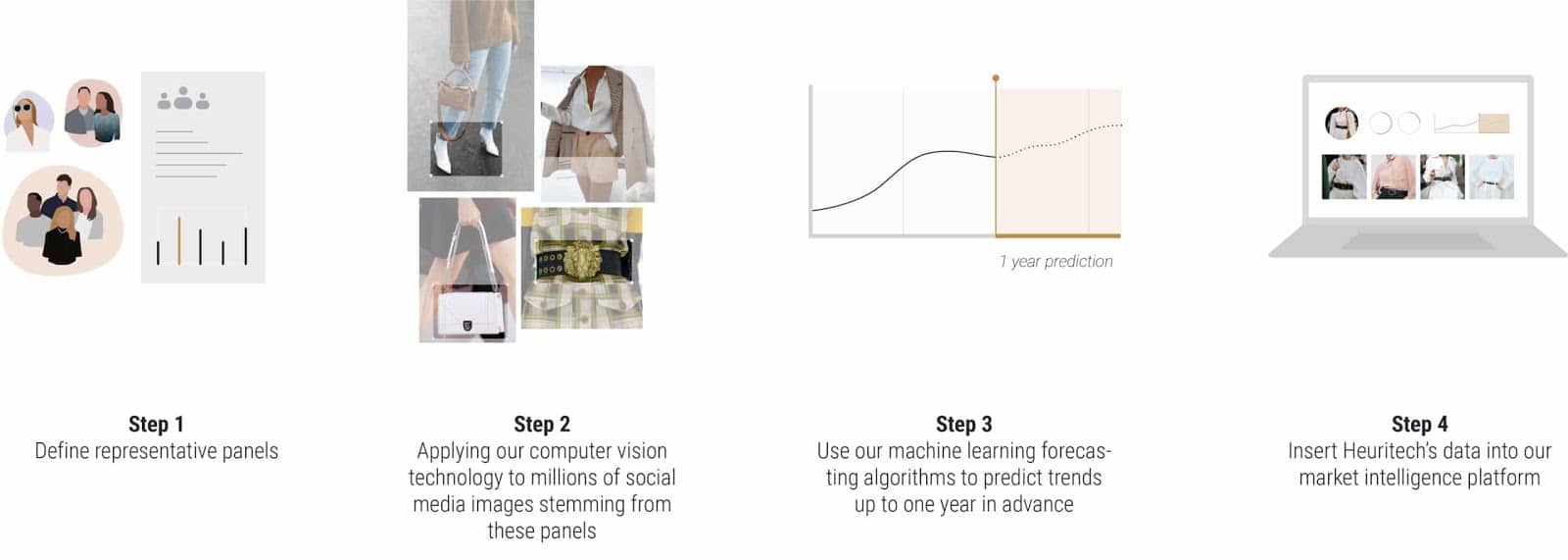Ai In Fashion: Revolutionizing Design and Trend Forecasting

Executive Summary

The fashion industry is undergoing a transformation as artificial intelligence (AI) gains popularity. AI-powered tools are already being used to automate tasks such as design, trend forecasting, and customer service. This technology has the potential to significantly change the industry by making it more efficient, creative, and responsive to customer needs.

Introduction
The integration of AI technology into the fashion sector is altering the ways that clothes are conceptualized, manufactured, and marketed. We examine the numerous applications of AI in the fashion industry in this article, highlighting its impact on design, trend prediction, customer service, and supply chain management.
FAQ
1. How is AI being used in fashion design?
AI tools can generate original designs, analyze fashion trends, and provide designers with real-time feedback.
2. How does AI help in trend forecasting?
AI uses data analysis to spot trends, determine consumer preferences, and forecast future fashion trends.
3. How can AI improve customer service in fashion?
AI chatbots offer round-the-clock customer support, enabling individualized suggestions and resolving issues promptly.
Subtopics in Detail
1. Design
- Generative Design: AI models can produce innovative designs based on input data, allowing designers to explore new ideas and expedite the design process.
- Virtual Sampling: AI aids in creating virtual samples of garments, saving time and resources on physical sampling.
- Personalized Design: AI considers individual preferences, body measurements, and style to create unique and tailored garments.
- Trend Analysis: AI analyzes vast amounts of data to identify emerging trends and predict future fashion directions.
2. Trend Forecasting
- Data Analysis: AI examines data from social media, e-commerce platforms, and fashion shows to identify patterns and trends.
- Machine Learning: AI algorithms learn from historical data to predict future trends, providing invaluable insights for decision-making.
- Consumer Insights: AI helps businesses understand consumer preferences, allowing them to align products and marketing strategies accordingly.
- Trend Forecasting Reports: AI generates reports that provide detailed insights into future fashion trends, empowering businesses to stay ahead of the curve.
3. Customer Service
- AI Chatbots: Chatbots provide instant support, 24/7, answering customer queries and resolving issues efficiently.
- Personalized Recommendations: AI algorithms offer personalized product recommendations based on customer preferences and purchase history.
- Virtual Stylists: AI-powered virtual stylists assist customers with outfit selection and style advice.
- Sentiment Analysis: AI analyzes customer feedback to gauge sentiment, identify pain points, and improve customer satisfaction.
4. Supply Chain Management
- Demand Forecasting: AI predicts future demand, optimizing inventory levels, reducing waste, and ensuring product availability.
- Logistics Optimization: AI algorithms optimize shipping routes, carrier selection, and delivery times to enhance efficiency and reduce costs.
- Quality Control: AI automates quality control processes, reducing defects and ensuring product quality consistency.
- Sustainability Tracking: AI monitors and tracks sustainability metrics, such as resource consumption and waste generation, to improve environmental performance.
Conclusion
AI technology is quickly transforming the fashion industry, creating new opportunities for innovation, efficiency, and customer engagement. As AI capabilities continue to advance, we can only imagine the even greater impact it will have on the future of fashion. Embracing AI is crucial for businesses looking to stay competitive, adapt to changing consumer demands, and drive the industry forward.
Keyword Tags
- Artificial Intelligence
- Fashion Design
- Trend Forecasting
- Customer Service
- Supply Chain Management
